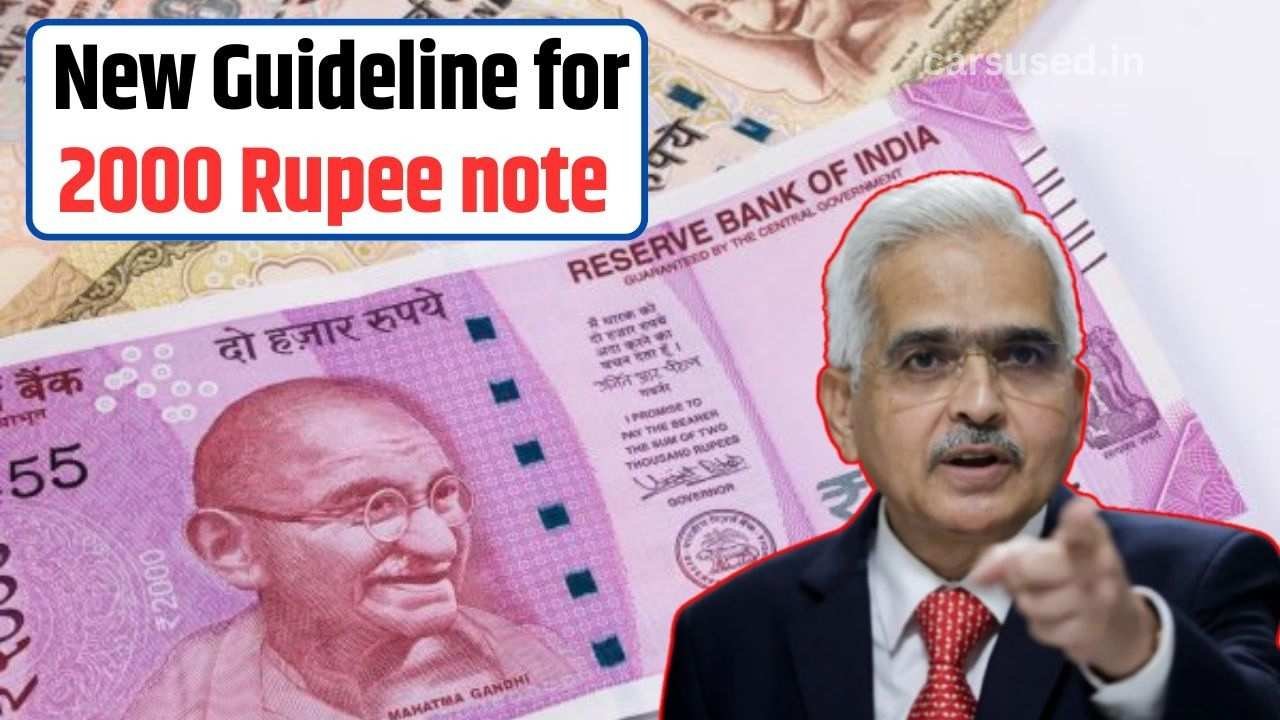₹2000 Note: In May 2023, the Reserve Bank of India (RBI) made a significant announcement regarding the withdrawal of the ₹2,000 denomination banknotes from circulation. This decision sparked curiosity and debate across the nation. Let’s delve into the reasons behind this move, its benefits, and whether we might see the return of the ₹2,000 note in the future.
Why Was the ₹2000 Note Introduced?
The ₹2,000 note was launched in November 2016 as a part of the government’s demonetization strategy. It was introduced to:
- Replenish Currency: Post demonetization of ₹500 and ₹1,000 notes, ₹2,000 notes helped meet the immediate cash requirements.
- Facilitate Transactions: Its high denomination made it easier to handle large transactions during the currency shortage.
While it served its purpose effectively, the need for this denomination diminished over time.
Reasons Behind the Discontinuation
- Reduced Circulation
Over the years, the number of ₹2,000 notes in circulation steadily declined. By March 2023, their share in the total currency circulation had dropped to 10.8%, indicating limited public usage. - Cessation of Printing
The RBI stopped printing ₹2,000 notes in 2018-19, prioritizing smaller denominations like ₹200 and ₹500 for daily transactions. - Clean Note Policy
As part of the RBI’s Clean Note Policy, the focus shifted to maintaining good-quality, frequently used currency notes while removing soiled or rarely used denominations like ₹2,000. - Risk of Hoarding and Misuse
High-value currency notes like ₹2,000 are more susceptible to hoarding and use in illegal activities. The withdrawal aimed to address these concerns and promote transparency in financial transactions. - Encouraging Digital Transactions
With the rise of digital payment platforms, the dependency on high-denomination cash has reduced significantly. This decision aligns with the push toward a cashless economy.
Benefits of Withdrawing the ₹2000 Note
- Enhanced Financial Inclusion
Smaller denominations like ₹500 and ₹200 are more practical for everyday use, making transactions easier for a broader section of the population. - Better Currency Management
Removing the ₹2,000 note simplifies the logistics of printing, distributing, and managing currency. - Reduced Counterfeiting
High-denomination notes are often targeted by counterfeiters. Discontinuing ₹2,000 notes mitigates this risk and strengthens the monetary system. - Boost to Banking System
The decision led to an influx of deposits into banks, improving liquidity and increasing the availability of funds for lending. - Support for a Cashless Economy
The withdrawal encourages a shift toward digital payments, aligning with India’s vision of becoming a digitally empowered economy.
What Happens to Existing ₹2000 Note?
The ₹2,000 note continues to be legal tender. However, the RBI has instructed the public to exchange or deposit these notes at banks. This phased approach ensures minimal disruption to the economy and allows the public ample time to transition.
Will the ₹2000 Note Make a Comeback?
As of now, the RBI has not announced any plans to reintroduce the ₹2,000 denomination. Instead, the focus remains on smaller denominations that are more practical for daily transactions. Additionally, with the growing popularity of digital payments, the demand for high-value currency notes is expected to decrease further.
Conclusion
The withdrawal of the ₹2,000 note reflects the RBI’s proactive approach to evolving economic needs. By focusing on smaller denominations and promoting digital payments, the decision aims to enhance financial inclusion, curb misuse, and streamline currency management.
While the move marks the end of a significant chapter in India’s monetary history, it also sets the stage for a more efficient and transparent financial system. Whether the ₹2,000 note returns in the future remains uncertain, but its legacy as a transitional currency during a critical economic phase will undoubtedly be remembered.
As India continues its journey toward a digitally driven economy, decisions like these play a pivotal role in shaping a modern and robust financial landscape.
